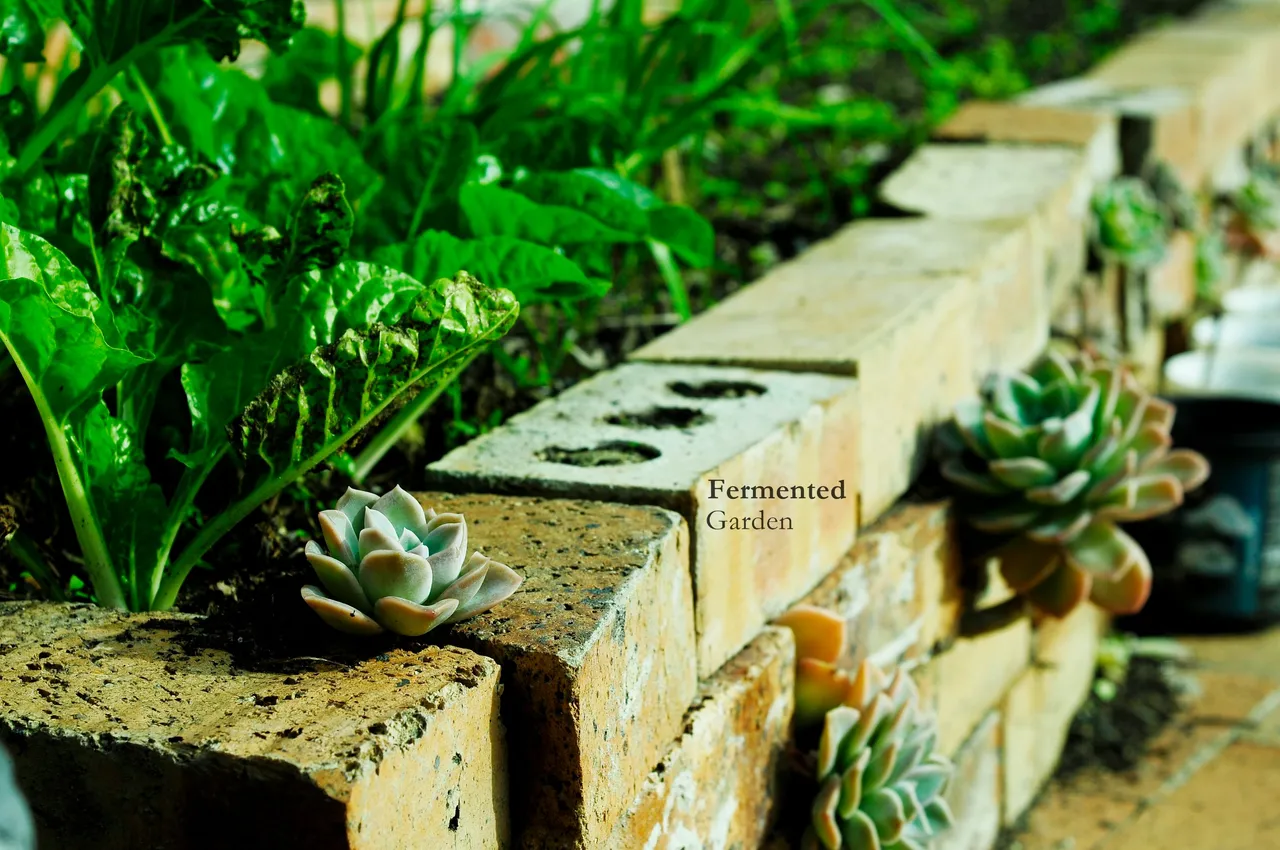
I am a messy gardener. I cannot abide by the rules that stipulate "plant in neat rows, 5 cm apart..." Most of the time, I just throw the seeds in the ground, or I let the plants self sow and I hope that something comes up. Usually, this approach works for me, as each winter the chickweed comes up - showing me it is winter - and each summer the purslane comes up - showing me its summer. I have tried to save the seeds of both these plants, but I have never succeeded - they thrive on self-sowing, and not to be dictated by my own whims.
The problem, if this can be seen as a problem, is that I never have neat gardens. The chickweed grows between the rocket, the white arum lily grows wild from the many rhizomes it always produces no matter how hard I try to get rid of them and plant them in other places. Nature does not like to be subservient.
But even in this chaos, it seems that there is a kind of beauty if we appreciate its wild aspects. At least, to my eye.
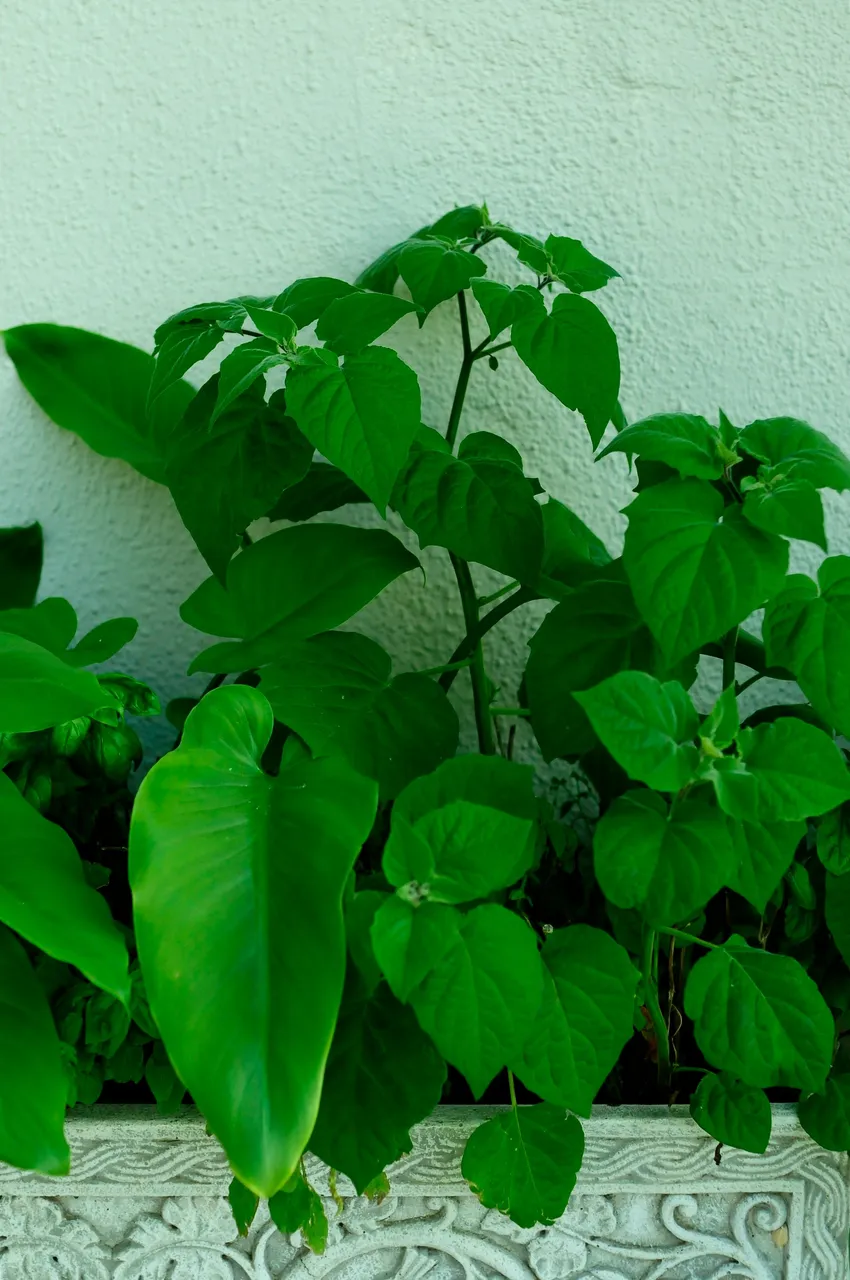 | 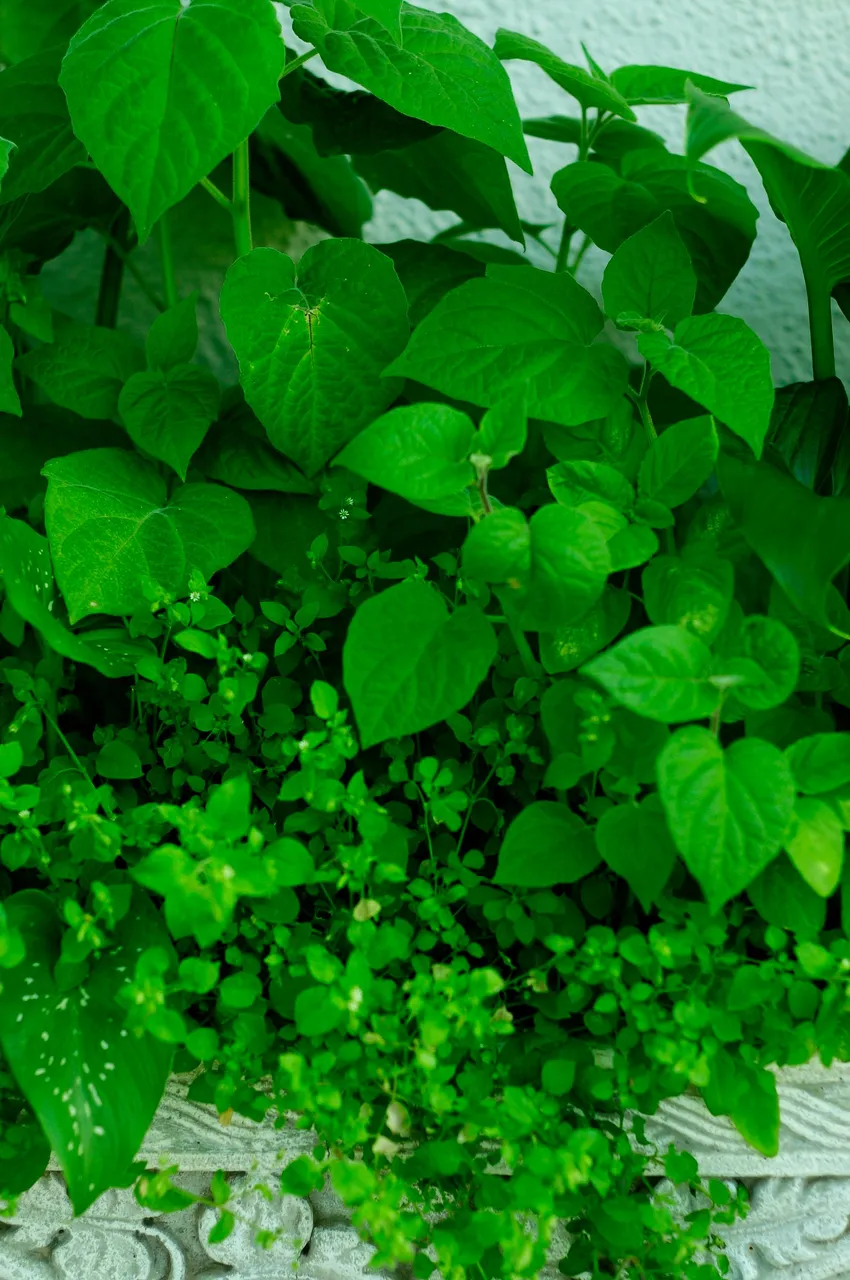 |  |
|---|---|---|
The other interesting aspect of this style of gardening is the uninvited guests it brings along with them... And this is not always a bad thing though.
The thing with making your own compost is that you will never get to a stage where all of the seeds in it will burn and die out. The problem is that wherever you throw your compost, there will be seeds popping up, and when you harvest these plants for the new compost, the likelihood that their seeds will also get re-distributed through the new compost is high. It is a strange yet beautiful circle of life.
In my most recent compost, I needed to discard a bunch of legumes and lentil seeds that got infested with bugs. I could not eat it any longer. The most logical thing for me to do was to put it in the compost, as I always do with food. The problem with this was that all of the compost now acts as perfect soil for lentils and other legumes to sprout!
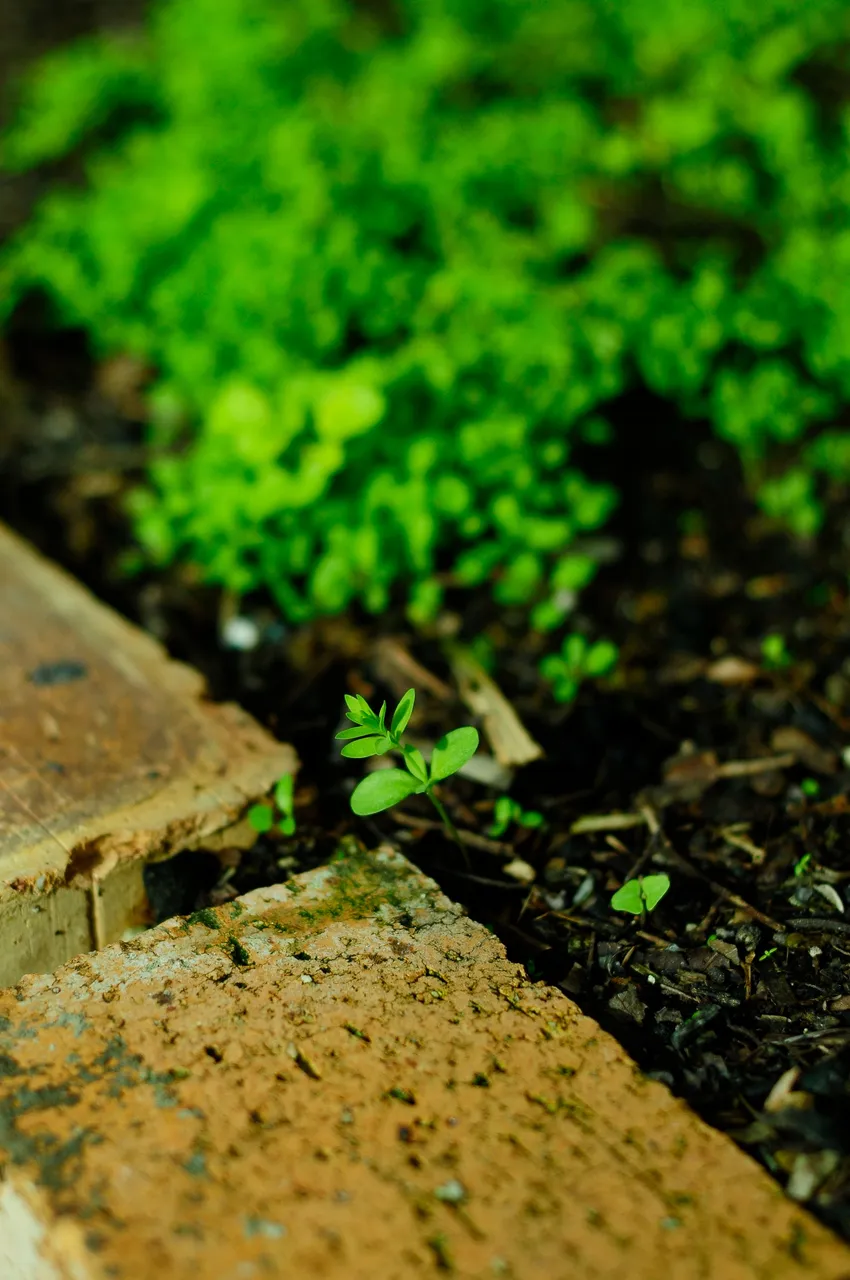 | 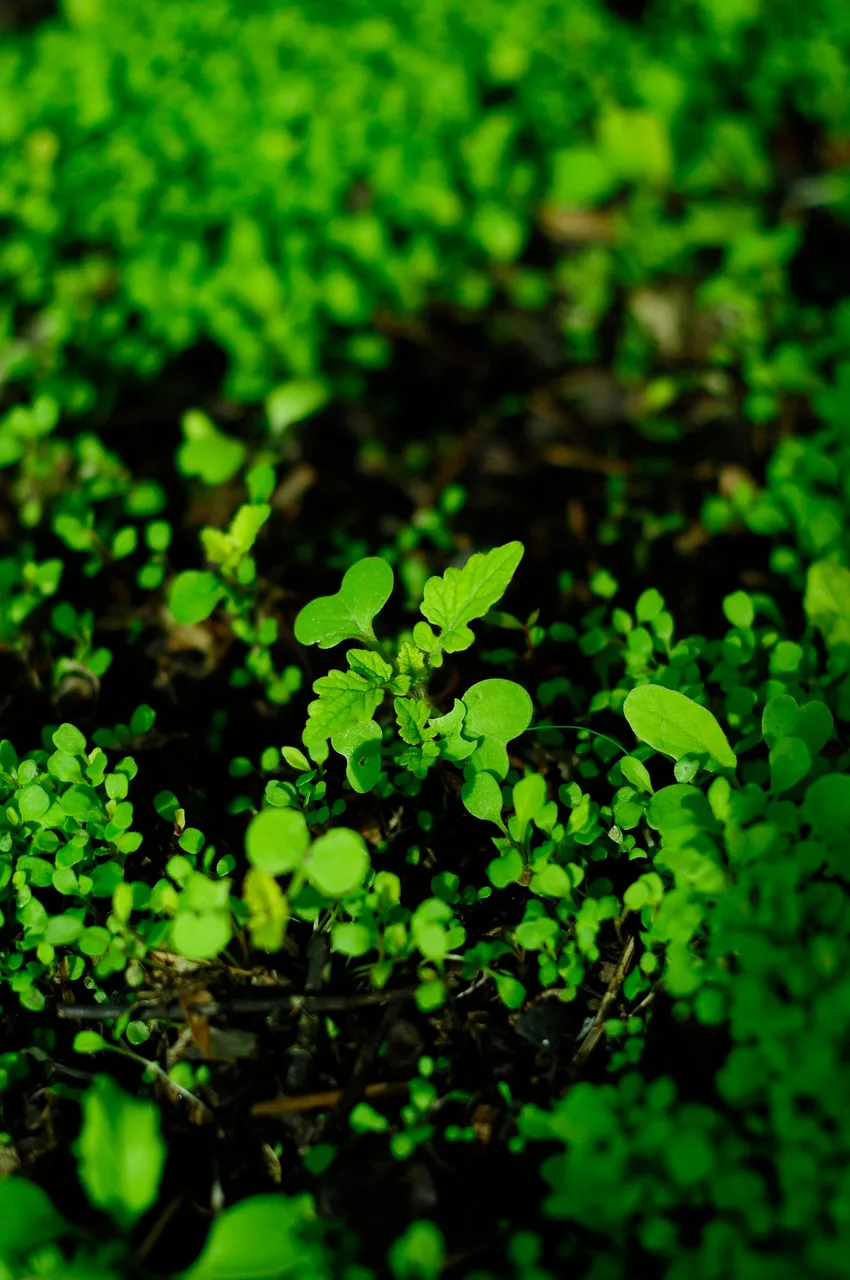 | 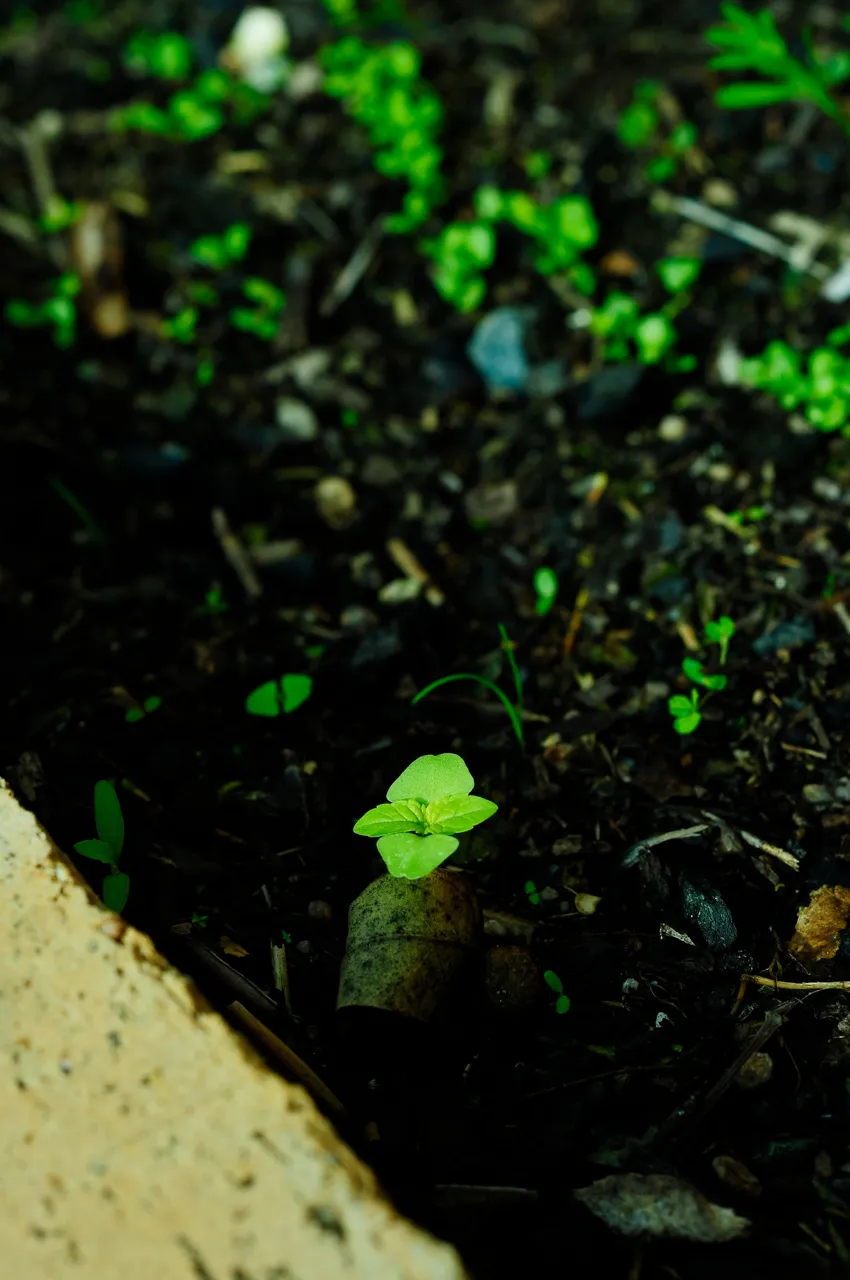 |
|---|---|---|
At first, I did not know or understand what was happening. Throughout the raised garden bed, I saw these strange-looking sprouting plants, which I thought could be small shrubs or trees that birds dropped in the bed through their droppings. But soon, I remembered my legume and lentil discarding activities earlier in the year into the compost!
But rather than get upset, I am embracing this situation as it will inevitably enrich the soil with its nitrogen-fixing properties, I am sure of it. But it was not just these seedlings that popped up, there were also other guests that seemed to travel a long way. Among the couple that I could identify (in the photographs above) were mustard plants, lin/flaxseeds, and even chia seedlings!
Below (in the photographs) are the legumes and even a pumpkin I think!
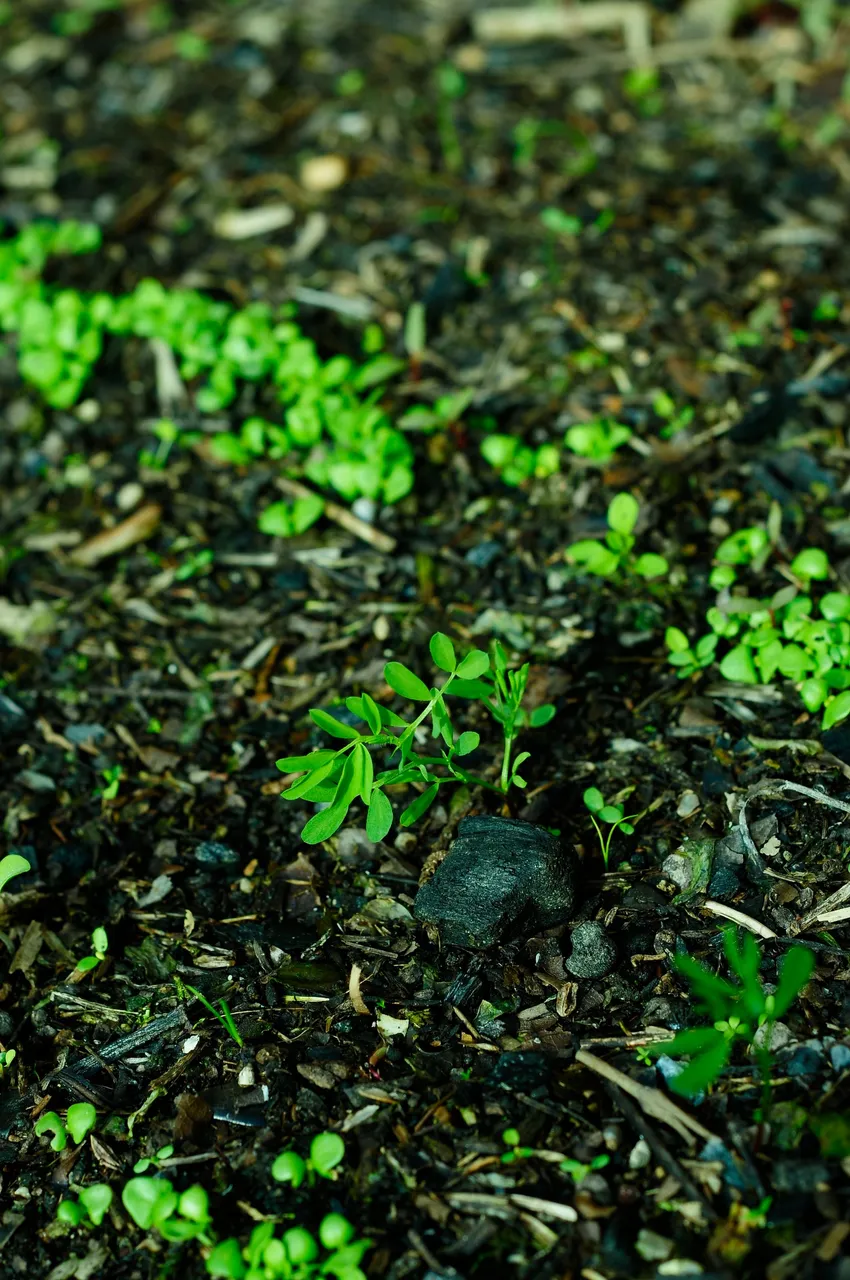 |  | 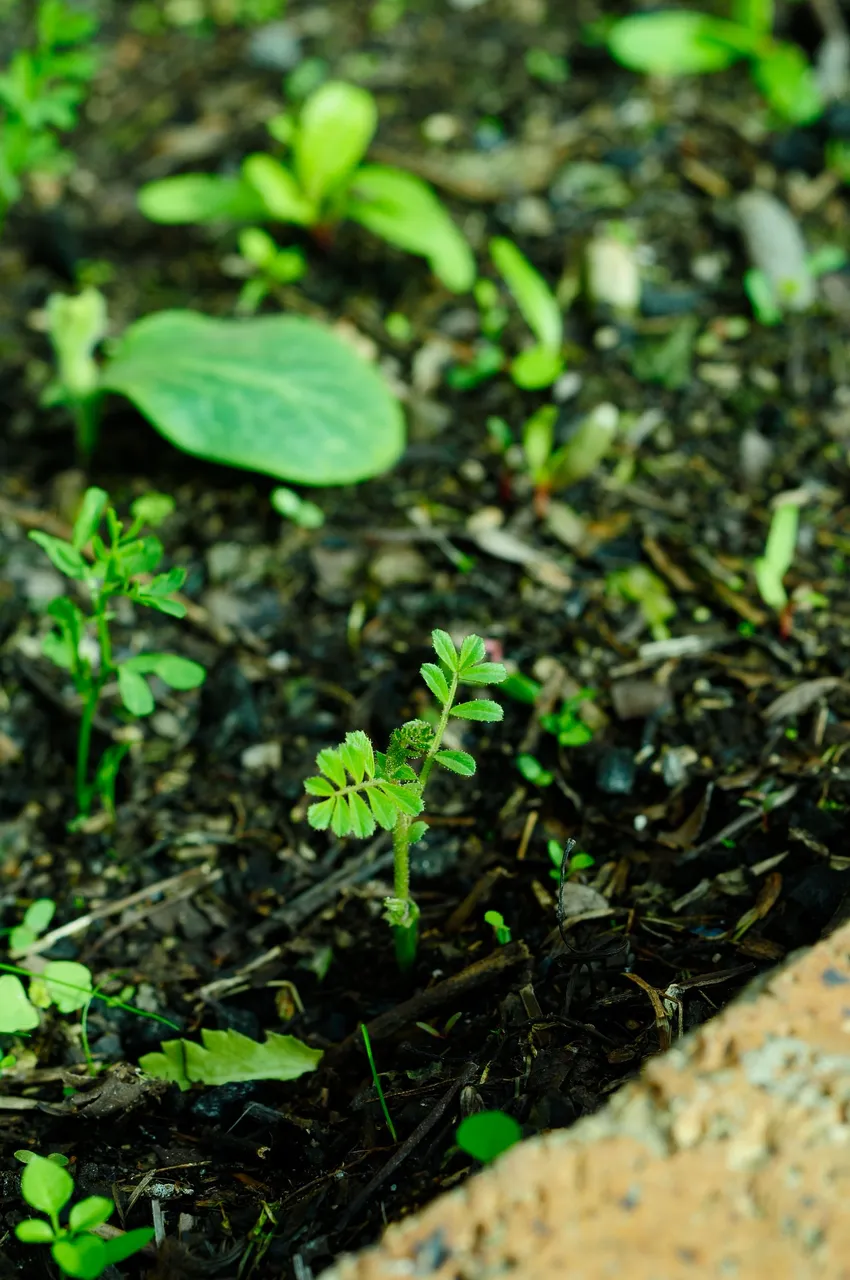 |
|---|---|---|
In the background, all of my actual plants are visible, doing fairly well but nothing in comparison to these uninvited guests! They are excelling in the fertile soil betwixt my actual plants, herbs, and so-called weeds!
But even though this is the case, the herbs and salad leaves are doing good, relatively speaking. Below, you can see that the salad rocket has pushed through its first set of true leaves. And the garlic chives seedlings are taking over! I am really excited to see how many of them will become big and healthy plants. I might even try to ferment some of them, seeing that I will have so many of them available. (Photographs below.)
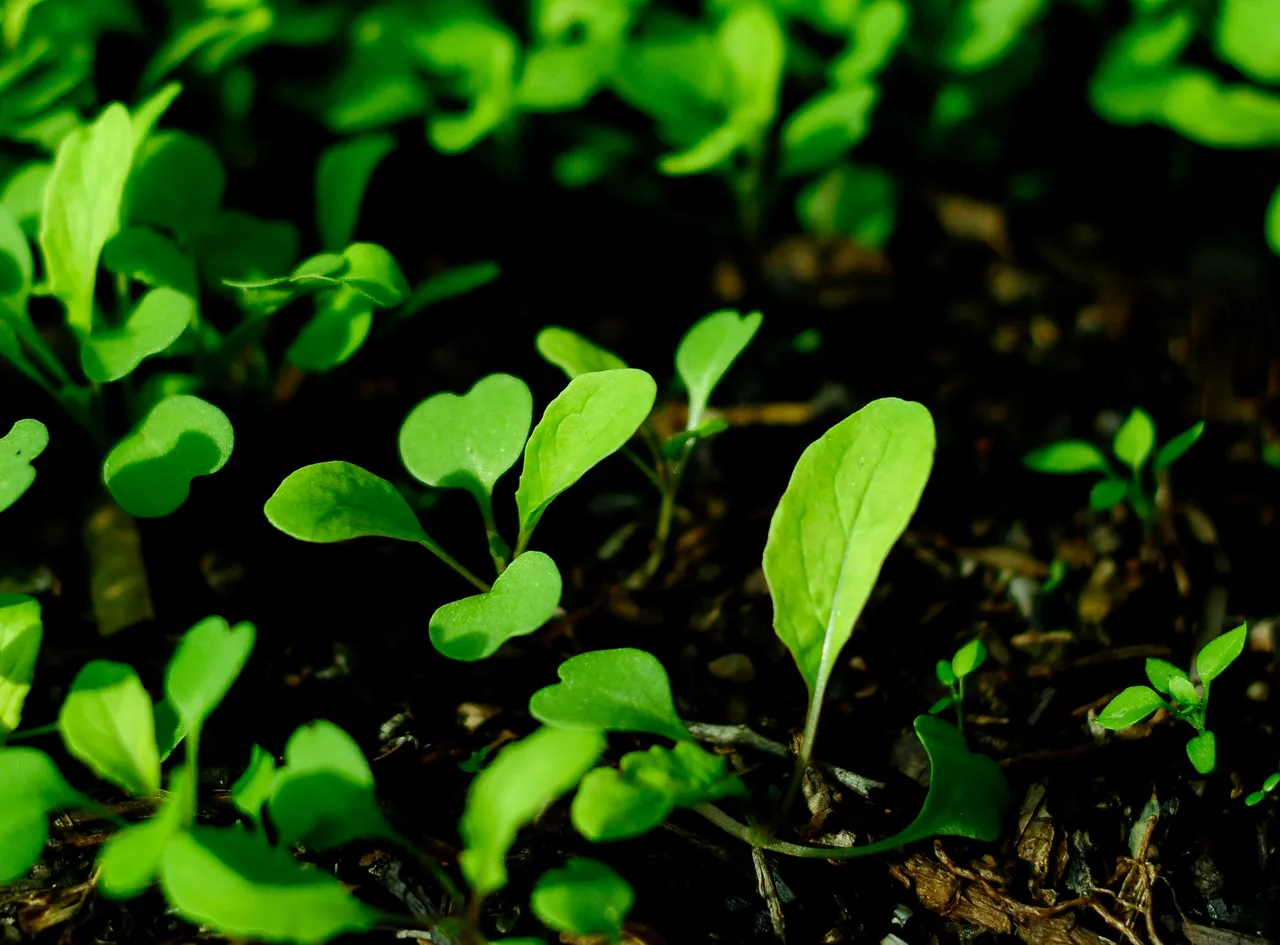
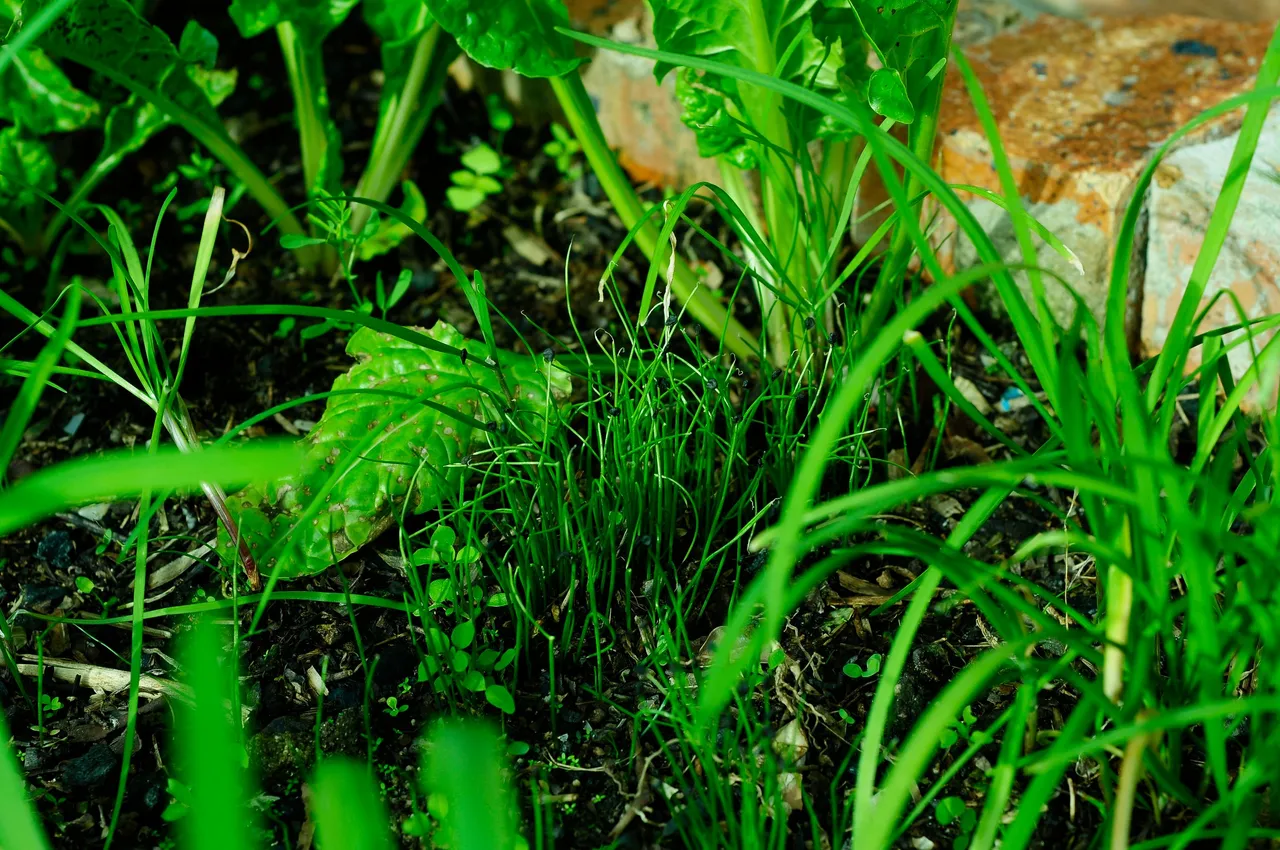

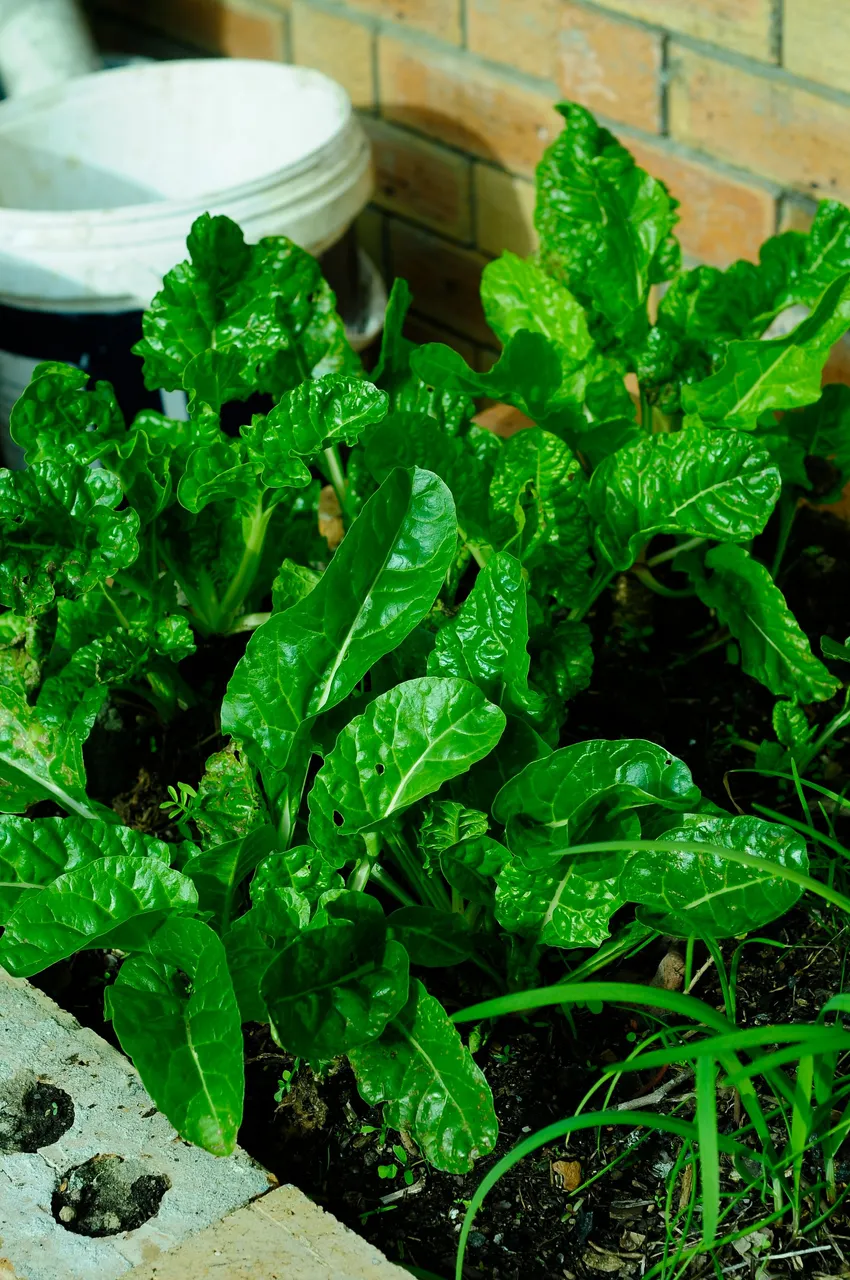
Top right, you can see that my lupine experiment is also working out; as I said last week(ish) and the week before that, I planted various species of lupine (yellow and purple) to see if these plants can help with fixing nitrogen in the soil. But with the many legumes and lentils growing in the raised bed, I do not think I will have a problem with nitrogen. But the lupines are not just there for their soil health addition, but also for their flowers! So, I look forward to this beauty.
On the other side (literally, and top left), you can see how my Swiss chard transplants also worked out, and that they are actually thriving at the moment! I will soon harvest from them, to encourage even more growth.
And lastly, from the very first image in this post, you can see the succulents are also doing well. Again, they are not showing signs of dying, so I presume that they are actually growing! But it is hard to see and keep track with the naked eye. (I should have photographed some of the individual plants!)
Alas, everything is growing, it is winter, and it is soup weather. Let us hope that the plants will grow in the cold winter weather (cold in a very temperate and mild sense).
I hope your garden is treating you well.
Happy growing!
All of the musings, writings, and meanderings are my own albeit inspired by the plants. The photographs are also my own, taken with my Nikon D300.